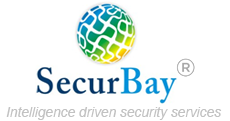The 5 things you need to know about Ransomware
Ransomware has ceased to become a threat only for the individual computers and now are an imposing threat to bigger organisations and their sensitive data. Hackers target bigger companies as they can extort huge funds from the same.
This growing trend has put the firms on a constant alert mode and make cybersecurity a tough job at all times.
When we listen to the word ransomware we only think about the malicious apps and software that can encrypt the files and make the data or the device inaccessible. But what are the key characteristics of it? Here are a few.
- Creating a backup must be your habit:
Even though you create a backup on the external hard drive you must know that with ransomware all the connected devices will be encrypted too. So if your external drive is connected to the computer or is on a shared network then it is as good as useless. So what can you do about it? The best method to save your data is to save it in different formats and at different locations altogether.
- It isn’t restricted to healthcare:
While prominently the healthcare industry has been targeted with ransomware every other sector is equally vulnerable. According to a report from PhishMe, 93% of phishing emails are now delivering ransomware. That number is up from 56% in December of 2015.
- The malware can spread:
In an ideal situation if your firm has been attacked by some ransomware the best practice is to unplug the machines and the network so that it does not spread to other devices. Also it is better to have adequate backup and recovery strategies in place so that you can take immediate action without losing out on your sensitive business data. Always keep the software on your computer up to date, especially the OS, browser and browser plug-ins like Flash Player, Adobe Reader, Java and Silverlight. Never enable the execution of macros in documents, unless you have verified their senders and have confirmed with them that the documents should contain such code.
- Creating suitable measures:
To avoid such attacks from different sources a multi-level approach must be applied. Interestingly, new variants of ransomware are getting created every day. 362,000 new crypto-ransomware variants were spotted in 2015. Along with the ransom that needs to be paid the entire downtime lost during the process is invaluable. Carefully scrutinize emails, especially those that contain attachments, regardless of who appears to have sent them.
- Ransomware also might contain mistakes:
There are possibilities of attackers making errors in the algorithms that they create for file encryption. This makes recovery of files a feasibility. There have also been instances when the files have been recovered but it is also crucial to understand these flaws can be easily fixed by the attackers quickly and hence recovering is only a temporary solution. Most security vendors discourage paying the ransom, because there’s no guarantee that the attackers will provide the decryption key and because it ultimately encourages them.
References:
https://blog.barkly.com/rise-of-ransomware-healthcare-stats
http://www.pcworld.com/article/3041001/security/five-things-you-need-to-know-about-ransomware.html







Comments are closed.